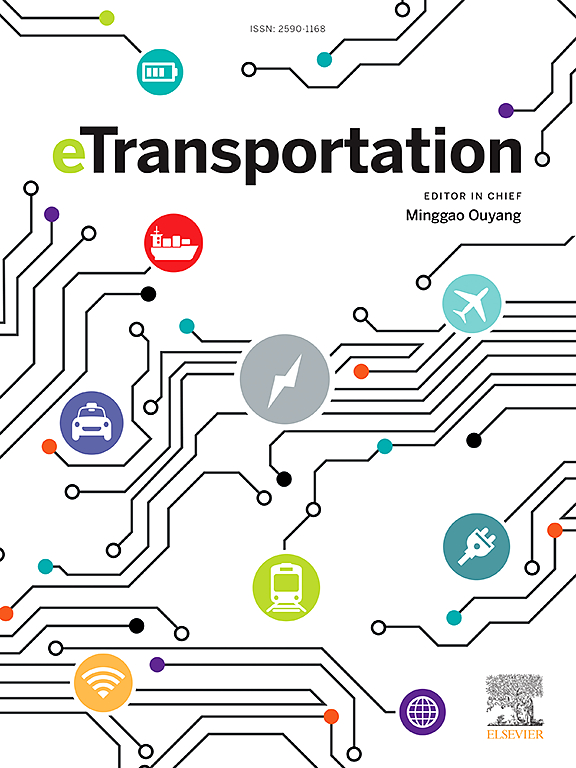高能量密度锂电池设计:由液态变为全固态
IF 17
1区 工程技术
Q1 ENERGY & FUELS
引用次数: 0
摘要
随着电动汽车和各种电动飞机等应用领域对锂电池的需求不断增加,通过合理的设计大幅提高锂电池的能量密度势在必行。然而,高能量密度锂电池的设计路线图仍然缺乏,很大程度上是由于电化学活性材料的选择不确定以及各种因素之间的复杂关系。本文通过对不同能量密度等级锂电池关键部件的影响和原型设计的探讨,初步提出了涵盖关键因素、反映关键关系的整体系统设计原则和路线图。本文从电池设计的基本原理出发,讨论了阴极、阳极、电解液等组件对实现高能量密度锂电池的作用。基于高能量密度锂电池的原型设计,可以实现高达1000 Wh/kg的不同级别的能量密度,其中富锂层状氧化物(LLOs)和固态电解质是获得500 Wh/kg以上高能量密度的核心。因此,锂电池根据不同的能量密度等级进行分类,并提供可用的组件选项,以满足其最适合的应用场景。本文章由计算机程序翻译,如有差异,请以英文原文为准。
Design of high-energy-density lithium batteries: Liquid to all solid state
With the rising demand of lithium batteries from application fields including electric vehicles (EVs) and various electric aircrafts, it is imperative to greatly enhance the energy density of lithium batteries by rational design. However, there is still a lack of design roadmap for high-energy-density lithium batteries, largely owing to the uncertain selections of electrochemically active materials and the complicated relationships of diverse factors. In this article, based on the discussion of effects of key components and prototype design of lithium batteries with different energy density classes, we aim to tentatively present an overall and systematic design principle and roadmap, covering the key factors and reflecting crucial relationships. This article starts from the fundamental principles of battery design, and the effects of cathode, anode, electrolyte, and other components to realize high-energy-density lithium batteries have been discussed. Based on the prototype design of high-energy-density lithium batteries, it is shown that energy densities of different classes up to 1000 Wh/kg can be realized, where lithium-rich layered oxides (LLOs) and solid-state electrolytes play central roles to gain high energy densities above 500 Wh/kg. Lithium batteries are thus categorized according to different energy density classes, with available component options, to meet their most suitable application scenes.
求助全文
通过发布文献求助,成功后即可免费获取论文全文。
去求助
来源期刊

Etransportation
Engineering-Automotive Engineering
CiteScore
19.80
自引率
12.60%
发文量
57
审稿时长
39 days
期刊介绍:
eTransportation is a scholarly journal that aims to advance knowledge in the field of electric transportation. It focuses on all modes of transportation that utilize electricity as their primary source of energy, including electric vehicles, trains, ships, and aircraft. The journal covers all stages of research, development, and testing of new technologies, systems, and devices related to electrical transportation.
The journal welcomes the use of simulation and analysis tools at the system, transport, or device level. Its primary emphasis is on the study of the electrical and electronic aspects of transportation systems. However, it also considers research on mechanical parts or subsystems of vehicles if there is a clear interaction with electrical or electronic equipment.
Please note that this journal excludes other aspects such as sociological, political, regulatory, or environmental factors from its scope.
 求助内容:
求助内容: 应助结果提醒方式:
应助结果提醒方式:


